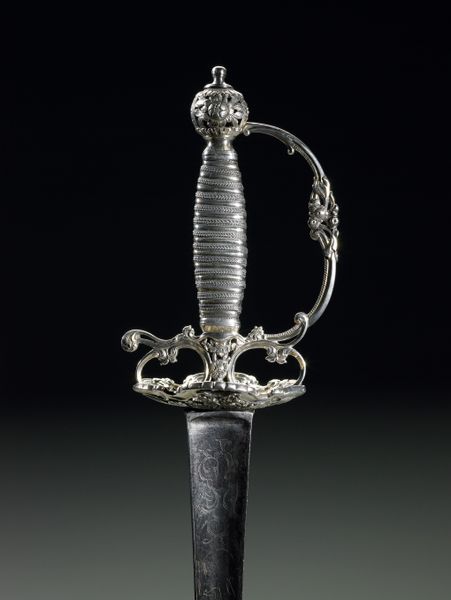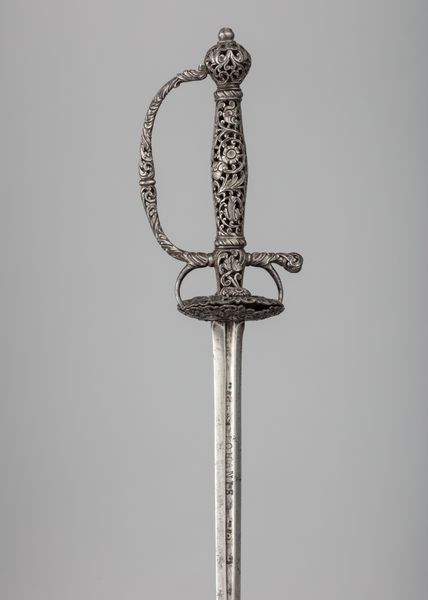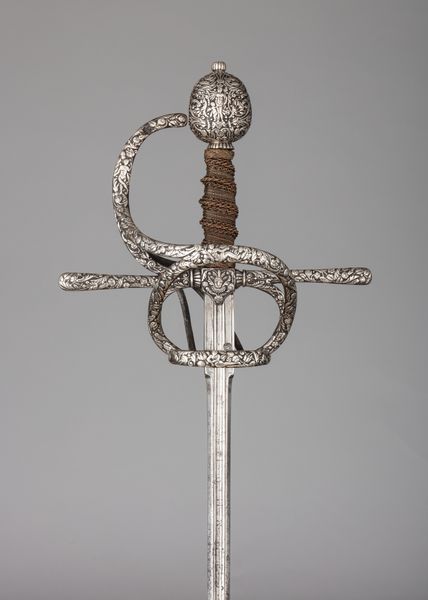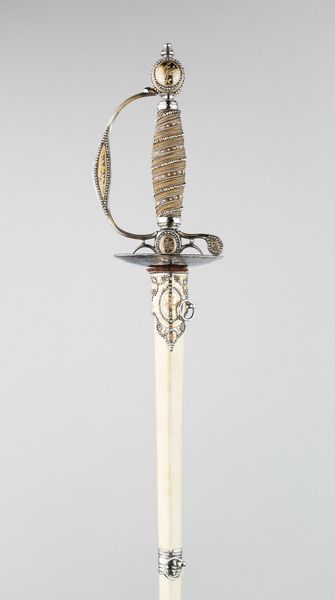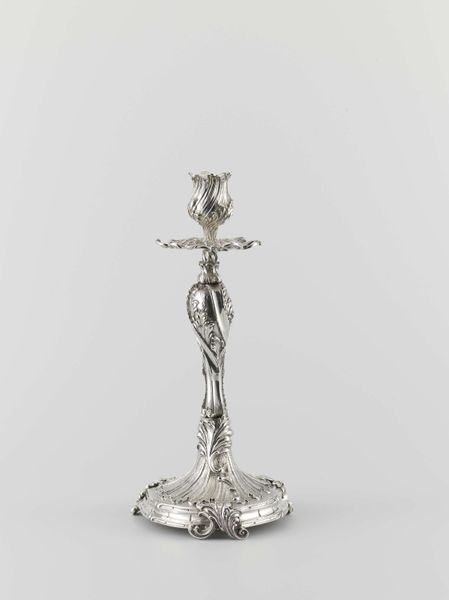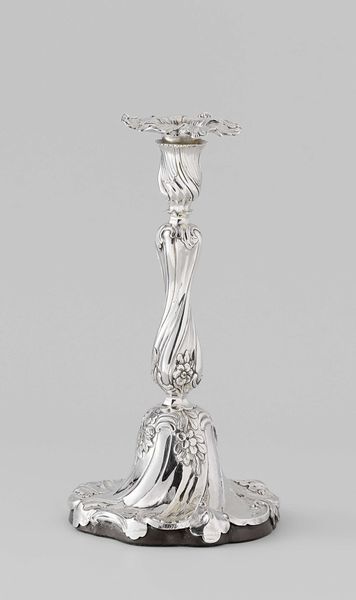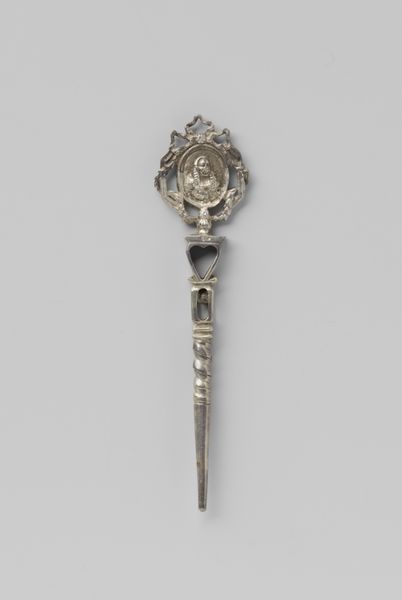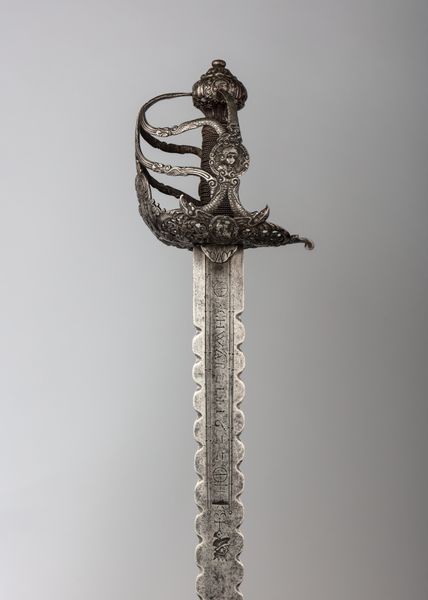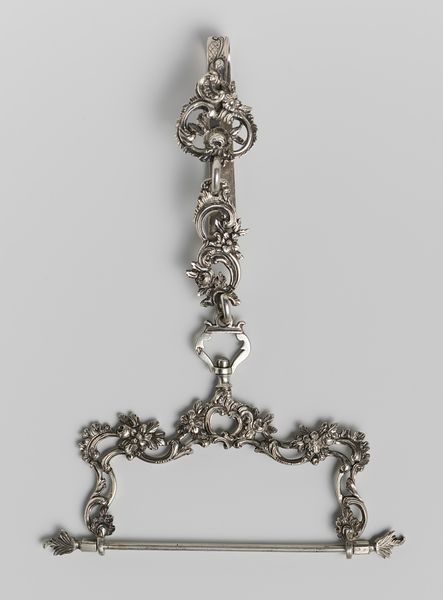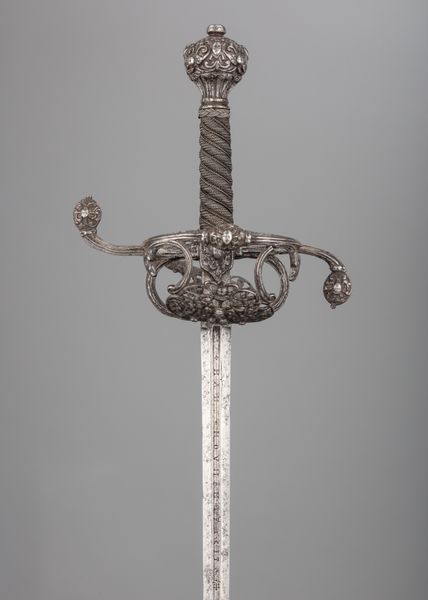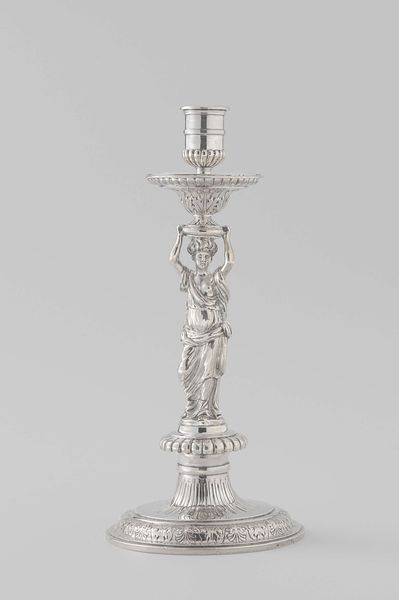
Smallsword Crossguard and Pommel: c. 1650 Blade: early 18th century Grip: c. 1550
0:00
0:00
carving, metal, sculpture
#
portrait
#
weapon
#
carving
#
baroque
#
metal
#
figuration
#
sculpture
#
armor
#
sword
Dimensions: Overall L. 81.5 cm (32 1/8 in.) Blade L. 67.3 cm (26 1/2 in.) Wt. 1 lb. 6 oz.
Copyright: Public Domain
Curator: This ornate object is a Smallsword, its parts dating from different periods—the crossguard and pommel from around 1650, the blade from the early 18th century, and even the grip harks back to 1550! Editor: Oh, how intriguing! My first thought: a ballet of power and decadence. It’s so decorative, so delicate for something meant for violence. It is rather diminutive and elegant. Curator: Exactly! This wasn't your battlefield broadsword, but more of a fashion statement, a status symbol amongst the elites. The carvings… oh, the craftsmanship! You can see the hint of Baroque flourish in it. It is housed at the Art Institute of Chicago. Editor: I'm wondering about the identity and the function. Who would wear such a thing? Also, what are we to make of the tiny equestrian figure on top of the hilt? It has such a bold character. Curator: One would have worn it, perhaps for dueling or formal events. The tiny figure—perhaps a nobleman asserting his authority, but playfully. Smallswords of this kind served to perpetuate systemic injustice by reminding people who held the power and who did not. Editor: Yes, thinking of historical class dynamics… how violence was also intimately tied to visual markers of elitism. It is such an intentional flaunting of hierarchical norms and structures. How can one look at that silver grip and NOT consider exploitation? Curator: Agreed. The use of precious metals reinforces social standing, doesn’t it? Also, its relatively diminutive nature betrays the weapon's function as a symbolic gesture rather than an engine of change in real conflicts. It feels...almost performative. Editor: The Smallsword becomes a synecdoche for how the aesthetic pleasures of a certain class were reliant on systems that perpetrated material deprivation and harm to so many. We should hold onto such complexity and complication as we reflect on the sword's significance. Curator: Indeed. It's a compelling reminder that objects carry layers of stories within them—of artistry, violence, and societal inequalities. There's real beauty in confronting these truths, isn't there?
Comments
No comments
Be the first to comment and join the conversation on the ultimate creative platform.


